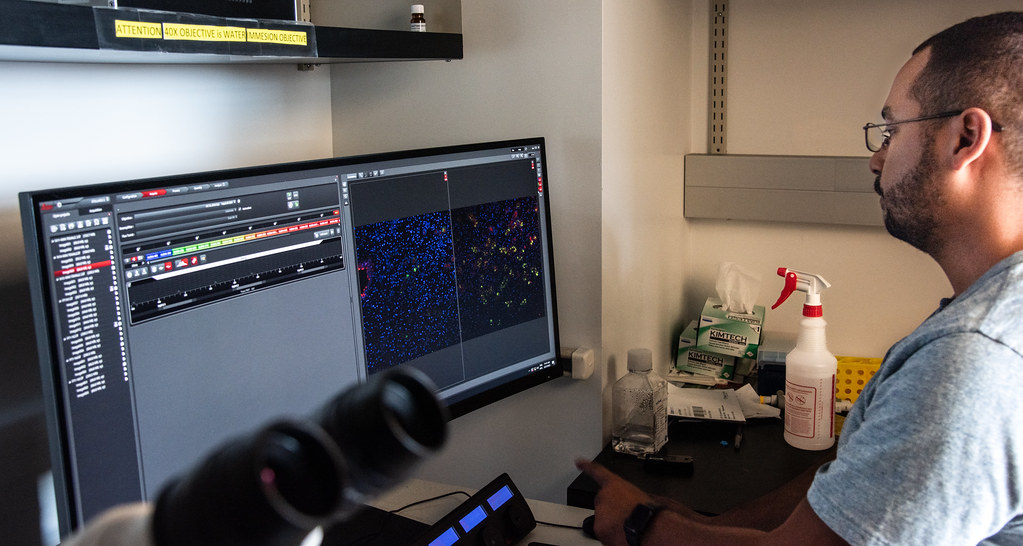
By Sarah Kiefer
A digital declutter is a way to get rid of the seemingly endless files of old photos and documents, but when Harim Tavares dos Santos started sorting through computer files from the Baker Lab at Bond LSC, one image stood out and led him down a rabbit hole.
The picture showed tuft cells, a rare type of cell on his screen that seemed to wave hello with their finger-like structures.
“They looked different from other cells, so I looked into it more and I found that they actually had a name, but not much other than the basic research had been done on them,” said Tavares dos Santos – a senior research scientist in the Baker lab at Bond LSC.
Those tuft cells may be an important link in his study of Sjögren’s disease, a chronic autoimmune disease that destroys cells that make saliva and tears. He recently identified these cells in ducts – responsible for expelling saliva – of the submandibular glands across species in mice, pigs and humans using transmission electron microscopy, a process that can magnify a sample up to 2 million times its size.
Tuft cells — named after their tuft-like microvilli — serve as sentries on the surface of organs to detect chemicals then signal immune and nerve cells. In the gut, these specialized epithelial cells can sense chemicals from parasites and microorganisms to alert the body of the invaders. While first found in the intestines, they also line airways, nasal cavities and other hollow organs. For Tavares dos Santos, their presence in salivary glands provides a possible link to Sjögren’s.
Looking like a bottle-shaped base topped with a latex glove, these cells were first discovered in 1956, but have been vastly understudied. They use receptors similar to those that detect sweet and bitter taste to regulate inflammation in several organs, including the intestine.
Tuft cells are currently an enigma in many tissues, leaving more questions than answers for researchers. After establishing their presence in salivary glands across species, Tavares dos Santos wants to pinpoint what they do there. He hypothesizes that tuft cells are involved in Sjögren’s pathogenesis. Still, ongoing studies are being conducted to confirm or refute this notion. Tavares dos Santos recently obtained a NIH K99/R00 grant and a Sjögren’s Foundation grant to work on this project, in which Baker will mentor Tavares dos Santos during the training phase of both of these grants.
“These types of cells were just forgotten in time and there is now a huge gap between the discovery of tuft cells and the first reports of their function,” Tavares dos Santos said. “I hope to work towards closing that gap and determining their specific role in the salivary glands and how that impacts clinical treatments for Sjögren’s patients.”

He wants to understand the molecular, morphological, and functional roles of tuft cells in salivary glands health and disease. Once Tavares dos Santos deciphers the code for the role tuft cells play, he plans to expand this knowledge to other conditions affecting salivary gland function such as irradiated salivary glands from patients treated for head and neck cancers.
But for now, Tavares dos Santos will focus on Sjögren’s.
“This work makes me feel challenged because tuft cells are poorly understood, so everything we discover about the role of tuft cells in salivary glands is new information,” Tavares dos Santos said. “I am excited about the idea that this research could help people in the future.”
Harim Tavares dos Santos published the paper “Tuft cells are present in submandibular glands across species” in the Sage Journal of Histochemistry & Cytochemistry in August 2022.
Harim recently received an NIH K99/R00: Pathway to Independence Award as well as a Sjögren’s Foundation grant that gives him the resources and the support to become a future faculty principal investigator.

